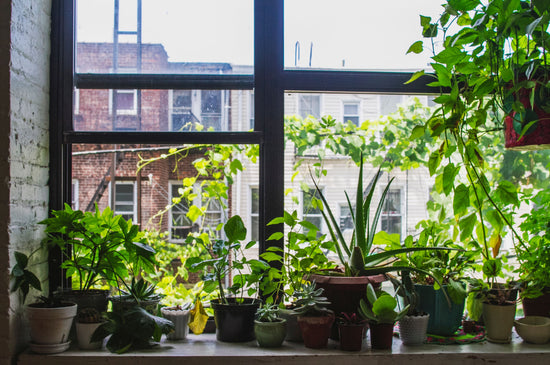What Clematis Grows in Shade
Clematis vines are renowned for their vibrant blooms and climbing ability, but many gardeners assume these plants are limited to sunny spots. Fortunately, several clematis varieties thrive in shaded or partially shaded areas, offering stunning flowers and lush foliage in spaces with limited sunlight. Choosing the right shade-tolerant clematis and providing proper care ensures that even the shadier parts of your garden can host a spectacular display.
Can Clematis Grow in Shade?
Yes, certain clematis varieties adapt exceptionally well to partial or dappled shade. While full sunlight is ideal for most clematis plants, shade-tolerant varieties are specifically suited to grow in areas that receive:
- Partial Shade: 3–6 hours of indirect or filtered sunlight daily.
- Dappled Sunlight: Light that filters through trees or other structures.
- Morning Sun/Evening Shade: A few hours of morning sun followed by shade during the hottest part of the day.
Shade-tolerant clematis varieties may produce fewer blooms than their sun-loving counterparts, but their flowers and foliage remain striking in less light.
Top Clematis Varieties for Shade
-
Clematis alpina
- Description: A hardy, early-flowering variety with nodding, bell-shaped blooms in shades of blue, pink, or white. Clematis alpina thrives in cooler, shadier conditions.
- Bloom Time: Early spring.
- Height: 6–10 feet.
- Best Use: Perfect for small trellises, walls, or fences in woodland gardens.
-
Clematis macropetala
- Description: This variety is similar to Clematis alpina, featuring semi-double or double bell-shaped flowers. It blooms reliably in partial shade.
- Bloom Time: Mid to late spring.
- Height: 8–12 feet.
- Best Use: Adds charm to shaded pergolas or grows beautifully through shrubs.
-
Clematis montana
- Description: A vigorous, shade-tolerant climber with abundant white or pink flowers and a sweet fragrance. It grows rapidly and covers large areas.
- Bloom Time: Late spring to early summer.
- Height: 20–30 feet.
- Best Use: Ideal for shaded walls, large trellises, or climbing through trees.
-
Clematis ‘Silver Moon’
- Description: This variety produces large, silvery-lavender flowers that stand out beautifully in low-light conditions.
- Bloom Time: Early to mid-summer.
- Height: 6–10 feet.
- Best Use: Great for partially shaded fences or arbors.
-
Clematis ‘Nelly Moser’
- Description: Featuring pink blooms with darker stripes, this clematis performs exceptionally well in dappled sunlight or morning sun.
- Bloom Time: Late spring to early summer, with a second bloom in late summer.
- Height: 8–12 feet.
- Best Use: A versatile option for trellises, fences, or shaded corners.
How to Grow Clematis in Shade
Shade-tolerant clematis varieties require a few specific care techniques to thrive in low-light environments:
- Provide Morning Sunlight
- Even shade-tolerant clematis benefit from a few hours of morning sunlight to encourage healthy growth and blooms.
- Ensure Well-Draining Soil
- Clematis prefer rich, well-draining soil. Amend heavy or clay soil with compost to improve drainage and fertility.
- Plant the Crown Deeply
- As with all clematis, bury the crown 2–3 inches below the soil surface during planting to protect it from temperature fluctuations and promote healthy growth.
- Maintain Consistent Moisture
- Shaded areas often retain more moisture, but ensure the soil stays moist without becoming waterlogged. Mulch around the base of the plant to regulate moisture and keep the roots cool.
- Fertilize Regularly
- Feed clematis with a balanced fertilizer in early spring and again mid-season to support healthy growth and flowering.
- Prune Correctly
- Follow the pruning guidelines for your clematis variety. Most shade-tolerant clematis fall into Group 1 or Group 2, requiring minimal or moderate pruning.
Benefits of Growing Clematis in Shade
Brightens Shady Spaces: Shade-tolerant clematis varieties bring color and texture to areas that might otherwise feel dull. Cooler Conditions: Shaded areas provide a more comfortable environment for gardeners in hot climates. Extended Bloom Time: Many shade-tolerant clematis varieties bloom in early spring or late summer, filling seasonal gaps.
Where to Use Shade-Tolerant Clematis
- Woodland Gardens
- Clematis like Clematis alpina and macropetala thrive under the filtered light of trees, adding vertical interest to woodland landscapes.
- North-Facing Walls
- Shade-tolerant clematis can brighten dark walls or fences, creating a striking focal point.
- Companion Planting
- Combine clematis with shade-loving perennials like hostas, ferns, or hydrangeas to create a lush, layered effect.
FAQ: What Clematis Grows in Shade?
Q: Will shade-tolerant clematis bloom as much as sun-loving varieties?
A: Shade-tolerant clematis may produce slightly fewer flowers than those grown in full sun, but the blooms remain just as vibrant and striking.
Q: Can clematis grow in full shade?
A: While some clematis varieties tolerate low light, most still require a few hours of indirect or filtered sunlight to thrive.
Q: How do I prevent fungal diseases in shaded clematis?
A: Ensure good air circulation around the plant, avoid overwatering, and plant in well-draining soil.
Q: Can I grow clematis in a shaded container garden?
A: Yes, compact varieties like Clematis alpina or Clematis ‘Nelly Moser’ do well in containers, even in shaded areas, as long as they are watered regularly.





